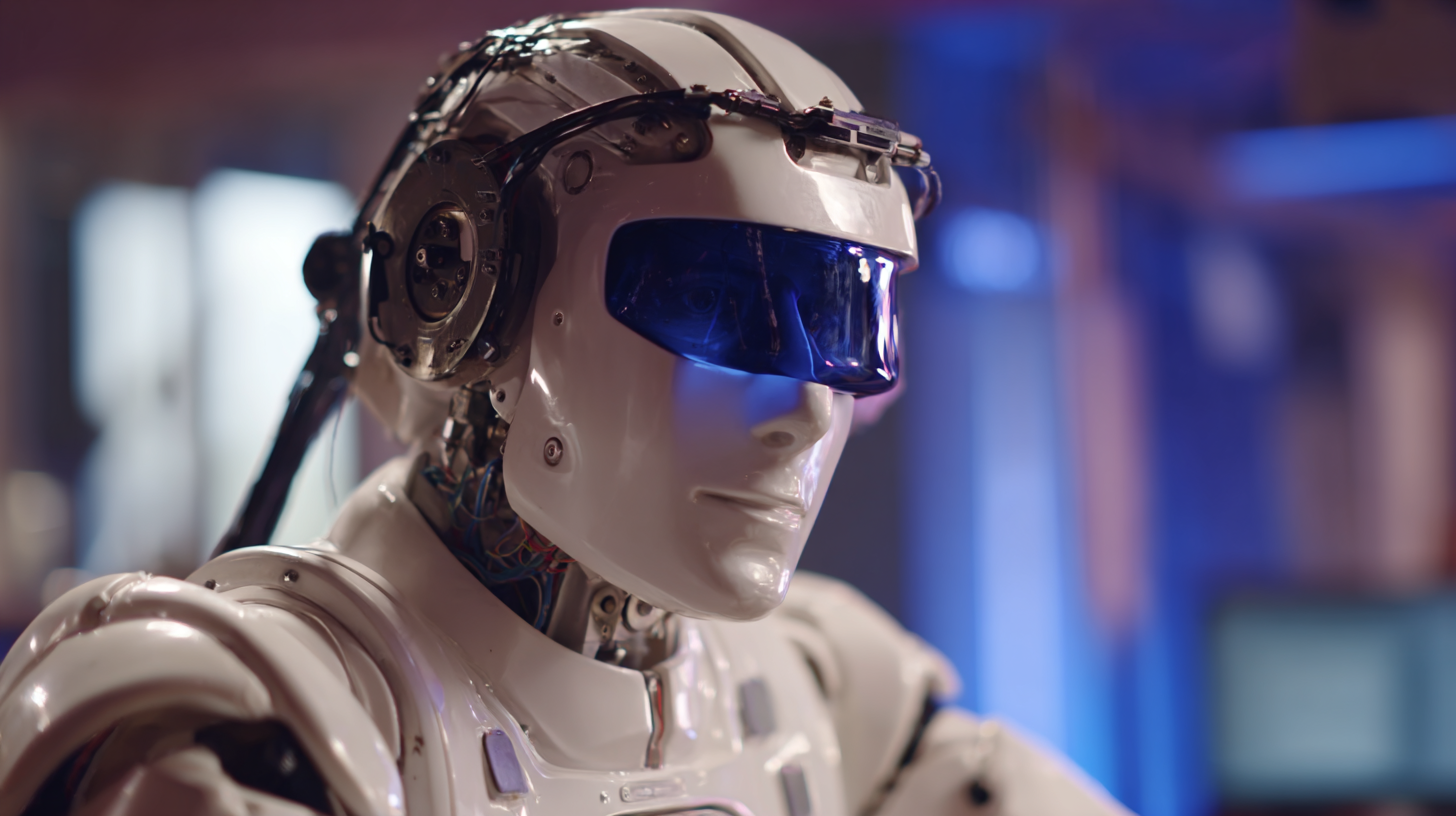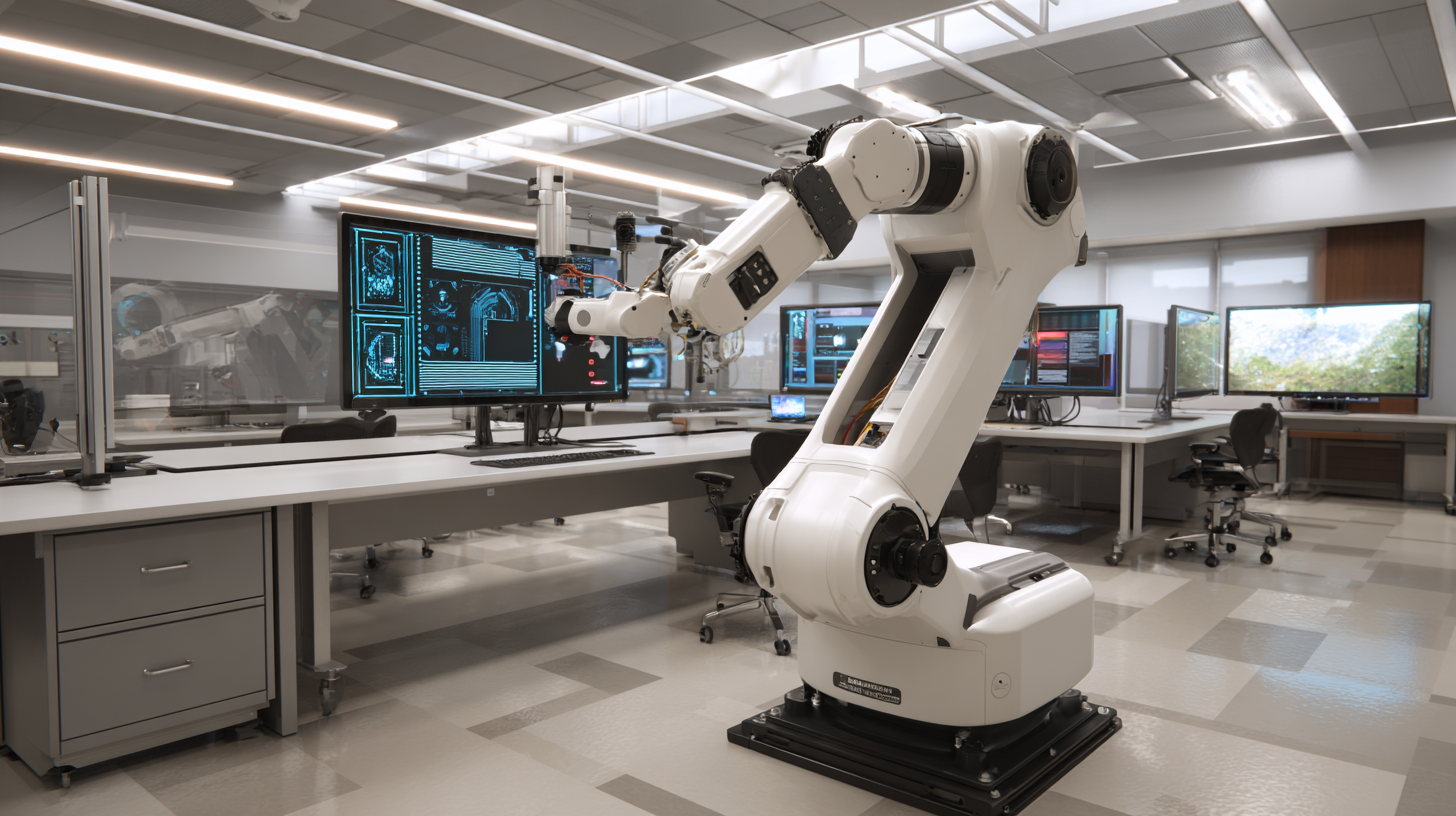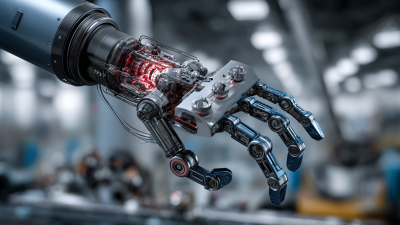Top 10 Robotics Lab Innovations Transforming Technology and Education
The field of robotics is rapidly evolving, establishing its crucial role in both technological advancement and educational reform. According to a report by the International Federation of Robotics, the global robotics market is projected to reach $189 billion by 2025, reflecting a compound annual growth rate of over 25%. This explosive growth is largely driven by innovations coming from robotics labs worldwide, where researchers and engineers are tirelessly working on groundbreaking projects that not only enhance industrial automation but also revolutionize STEM education.
In the context of education, robotics labs are becoming vital spaces that foster hands-on learning and critical thinking. A study published by the Institute of Electrical and Electronics Engineers highlights that students engaged in robotics programs show a 30% improvement in STEM-related skills compared to their peers. These environments cultivate creativity and problem-solving abilities, equipping the next generation with the necessary skills to thrive in a technology-driven world. As we explore the top 10 innovations emerging from robotics labs, we will uncover how these advancements are not only transforming technology but also shaping future educational paradigms.

Advancements in Robotics Education: A Statistical Overview of 2025 Trends
The advancements in robotics education are rapidly transforming the way students engage with technology. By 2025, an increasing number of educational institutions are expected to incorporate robotics into their curriculums, resulting in enhanced learning experiences for students. A recent statistical overview highlights that nearly 70% of schools plan to implement robotics programs, fostering critical thinking, teamwork, and problem-solving skills among students. This shift towards experiential learning is crucial in preparing the next generation for a technology-driven job market.
Moreover, innovations in robotics labs are significantly impacting educational methodologies. The integration of robotics kits and coding platforms allows students to learn through hands-on projects, reinforcing theoretical concepts and encouraging creativity. Statistics indicate that schools with dedicated robotics labs observe a 40% increase in student engagement and interest in STEM fields. These labs not only provide students with practical skills but also create a collaborative environment where they can experiment, innovate, and learn from each other, ultimately enhancing their educational journey.

The Role of Artificial Intelligence in Enhancing Robotics Lab Innovations
Artificial Intelligence (AI) is playing a pivotal role in reshaping robotics laboratories across the globe. By integrating AI technologies into robotics, labs can streamline their research processes and enhance learning experiences. For instance, machine learning algorithms enable robots to adapt to their environments, improving their functionality in educational settings. This adaptive learning allows students to engage with technology in real-time, fostering a deeper understanding of complex concepts.
Tips for enhancing your robotics lab with AI include starting with a multidisciplinary approach. Collaborate with experts in AI, engineering, and education to create a comprehensive curriculum that addresses various aspects of robotics. Additionally, consider incorporating simulation software to provide students with hands-on experience without the high costs associated with physical components. This can also allow for experimentation in a controlled environment, minimizing risks.
Moreover, leveraging AI-driven data analytics can provide valuable insights into student performance and engagement. By analyzing interaction patterns, educators can tailor their teaching methods to meet specific needs, making the learning experience more personalized and effective. Emphasizing the role of AI in robotics not only prepares students for future careers but also encourages innovation within laboratories, driving the technological advancements necessary for the next generation of robotic applications.
Top 10 Robotics Lab Innovations Transforming Technology and Education
This chart illustrates the impact of various innovations in robotics labs on technology and education, highlighting their contribution in enhancing learning outcomes and technological advancements.
Integrating Robotics into K-12 Curriculum: Data-Driven Outcomes by 2025
Integrating robotics into the K-12 curriculum has the potential to revolutionize education by fostering critical thinking, creativity, and problem-solving skills among students. According to a report by the International Society for Technology in Education (ISTE), schools that incorporate robotics and related technologies see a 20% increase in student engagement and motivation. By 2025, it is projected that over 50% of K-12 institutions will have adopted a robotics module, supported by data-driven methods to enhance learning outcomes.

Moreover, research by the Institute for the Future indicates that 85% of jobs that will exist in 2030 have yet to be invented, making it crucial for education systems to prepare students for an unpredictable future. Robotics education not only equips students with technical skills but also promotes collaboration and adaptability. A study published in the Journal of Educational Computing Research found that students involved in robotics programs outperform their peers in STEM subjects by an average of 30%, showcasing the academic benefits of integrating such innovative technologies into classroom settings. This data highlights the importance of embracing robotics in educational frameworks to meet the demands of the future workforce.
The Impact of Collaborative Robotics on Higher Education and Skills Development
Collaborative robotics, or cobots, are rapidly transforming higher education and skills development by facilitating hands-on learning experiences. Unlike traditional robotics, which often operate in isolation, cobots work alongside students and educators, allowing for a more interactive and engaging educational atmosphere. These robots are designed to assist with tasks rather than replace human efforts, thereby enabling students to focus on developing critical thinking and problem-solving skills. By integrating cobots into curricula, universities are preparing students for the demands of a workforce increasingly reliant on advanced technologies.
The application of collaborative robotics in education extends beyond technical proficiency; it also encourages teamwork and interdisciplinary collaboration. Students from various fields—such as engineering, computer science, and design—can work together on projects that incorporate cobots, fostering a culture of innovation and shared learning. As these robots simplify complex tasks and provide real-time feedback, they enhance the learning curve, allowing students to experiment and iterate their ideas quickly. This dynamic environment not only cultivates technical skills but also prepares graduates to thrive in a collaborative, technology-driven workplace.
Future Job Market Trends: Robotics Skills in Demand for 2025 and Beyond
As we move towards 2025, the landscape of the job market is rapidly evolving, with robotics skills becoming increasingly sought after across various industries. According to a recent report from the World Economic Forum, by 2025, automation and robotics will displace about 85 million jobs globally while creating 97 million new roles that require advanced technological skills. This shift emphasizes the necessity for educational institutions to pivot their curriculums towards robotics and artificial intelligence to prepare the future workforce effectively.
The demand for robotics skills is particularly prominent in fields such as manufacturing, healthcare, and logistics. A study by McKinsey Global Institute illustrates that up to 60% of occupations could be enhanced by automation, requiring employees to possess a robust understanding of robotics. This shift not only highlights the need for specialized training but also underscores the importance of interdisciplinary skills that combine creativity, problem-solving, and technical expertise. As businesses seek to leverage automation to increase productivity, the emphasis on robotics education will play a crucial role in equipping students with the skills to thrive in a tech-driven job market.
Top 10 Robotics Lab Innovations Transforming Technology and Education
| Innovation | Description | Impact on Education | Skills Required | Projected Demand (2025) |
|---|---|---|---|---|
| AI-Enhanced Robotic Tutors | Robots that provide personalized tutoring experiences to students. | Enhanced learning outcomes and accessibility. | AI Programming, Communication, Learning Analytics | High |
| Robotic Simulations for Science | Virtual laboratories that simulate real-world scientific experiments. | Hands-on experience without physical materials. | Robotics Programming, Data Analysis, Experiment Design | Medium |
| Collaborative Robots (Cobots) | Robots designed to assist humans in various tasks and industries. | Promotes teamwork and enhances workforce skills. | Robotics Engineering, Team Collaboration, Safety Protocols | High |
| Automated Curriculum Delivery | Systems that deliver and manage curriculum automatically. | Increases efficiency of educational delivery. | Programming, Curriculum Development, Data Management | Medium |
| Drone-Based Learning Aids | Drones used in classrooms for interactive learning experiences. | Enhances engagement and practical learning. | Pilot Training, Programming, Remote Sensing | High |
| 3D Printing in Robotics | Using 3D printing to create robotic components and prototypes. | Encourages creativity and design thinking. | 3D Modeling, Material Science, Robotics Design | Medium |
| Robotic Exoskeletons | Wearable robots that assist with movement and rehabilitation. | Support physical therapy and accessibility. | Biomechanics, Robotics Engineering, Rehabilitation Techniques | High |
| Mobile Learning Robots | Robots that move around to deliver lessons and engage students. | Interactive and engaging educational experiences. | Robotics Programming, Communication Skills, Adaptability | High |
| Telepresence Robots | Robots that enable remote participation in classes. | Expanded access for remote learners. | Remote Communication, Software Management, Networking | Medium |
| Smart Classroom Robots | Robots that assist teachers in managing classroom dynamics. | Enhances classroom management and productivity. | Classroom Management, Robotics Programming, AI Interaction | High |
Related Posts
-

Top 10 Innovative Think Robotics Solutions Transforming the Future of Automation
-

The Future of Robotics Automation Transforming Industries with Data Driven Innovations
-

Challenges Faced by Industries Embracing Robotics and Automation
-

Ultimate Guide to Mastering Agile Robotics for Business Success
-

Robotics Automation: A Comparative Analysis of Leading Solutions for Global Buyers
-

5 Best Innovations in Robotics Automation Transforming Industries